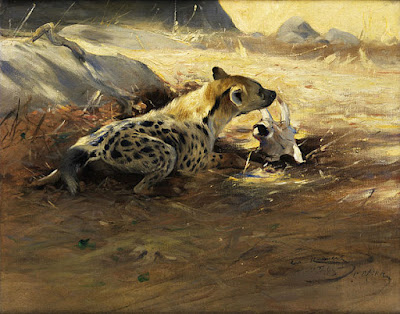Kuhnert's interest in wildlife led him to embark on several extensive journeys, including expeditions to East Africa and India. These trips allowed him to study animals in their natural habitats, making detailed sketches from direct observation and acquiring a deep understanding of animal behavior and anatomy.
Back in his studio, Kuhnert would use his field sketches and reference photographs to create large-scale oil paintings and illustrations. He paid meticulous attention to capturing the unique characteristics of each animal, emphasizing their physicality, texture, and natural environment.
He was well-versed in a broad range of mediums, including oil, pencil, charcoal, and chalk, and he could complete a large oil painting in just four days. Some of his paintings were on canvases eight feet or longer, and he had local craftsmen build immaculate frames for many of these paintings.
Kuhnert's artworks gained recognition and popularity, and he became known for his realistic portrayals of animals. His paintings often showcased the animals with a sense of dynamism and movement. Kuhnert's wildlife paintings were reproduced in natural history books, advertisements, school publications, and scientific texts, and his work shaped a popular understanding of the wildlife, landscape, and terrain of Africa and Asia.
--
Previously: Wilhelm Kuhnert's African Wildlife





The National Sporting Library and Museum in Middleburg, Virginia has some of his paintings on display from now till January 14, 2023. The show is the Survival of the Fittest: Envisioning Wildlife and Wilderness with the Big Four, Masterworks from the Rijksmusuem Twenthe and the National Museum of Wildlife. It's a great show. I went and saw it with Armand Cabrera. The pictures of his work do not do his work justice as compared to the originals in person.
ReplyDelete